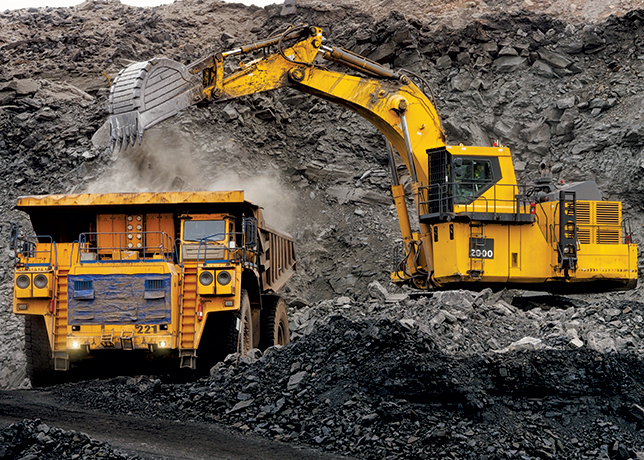
 Jaswani ... electrification is the future
Jaswani ... electrification is the future
The future of mining is being transformed by electric vehicles, focusing on advancements in battery technology, fast charging, and autonomous systems, Pranav Jaswani, Technology Analyst at IDTechEx, tells OGN
Technologies that are now becoming more mainstream in the automotive industry are also finding their way into the off-highway sector, especially mining vehicles.
However, before these benefits can be realised, the enabling technologies surrounding electric vehicles (EVs) must be thoroughly developed to a point where adopting one is as painless as possible. Building out battery and charging technology will be crucial in the industry’s electric transition.
IDTechEx’s market research report, ‘Electric Vehicles in Mining 2024-2044: Technologies, Players, and Forecasts’, highlights the role of large EV batteries and innovative fast charging methods in driving the adoption of electric mining vehicles, as well as the rise of autonomous mining vehicles.
The report provides more analysis of the technologies that will revolutionise the mining industry, financial analysis of mining EVs, and case studies of key players across the EV supply chain.
IDTechEx forecasts that the electric mining vehicle industry will be valued at nearly $23 billion by 2044.
 |
Technologies that will revolutionise mining vehicles |
The mining industry has historically been labour-intensive and posed a great risk to worker safety.
Vehicle drivers work long shifts under exposure to heat and noise, which can contribute to workplace accidents and cause injury or loss of life. The automation of vehicles is one way for operators to minimise the human cost of mining and improve overall safety.
The mining industry is particularly well-suited to automation. Most vehicles travel along the same general routes with few intersections and limited external traffic. The road networks of a mine represent a very narrow operational design domain for an autonomous vehicle.
It is for these reasons that autonomous mining vehicles first entered the market as early as the 1990s (far before electric mining vehicles), with Caterpillar introducing them as an additional service for their haul trucks.
The use of these grew steadily until the late 2010s before seeing an adoption boom in the last 5 years – jumping from around 500 autonomous mining vehicles worldwide to over 1,000 in this timespan.
This has been aided by the continued development of sensors, perception algorithms, and communication networks.
These vehicles use an array of sensors, including cameras, radar, and LiDAR of different wavelengths, in order to function in all light and weather conditions – these must all be ruggedised to withstand the harsh mining environments.
Perception algorithms help detect hazards in a vehicle’s path and minimise the impact of dust and humidity, which are commonplace in mines, on autonomous operation.
Finally, the establishment of robust 5G networks on-site enables communication between vehicles and further improves safety.
BATTERIES FOR VEHICLES
Hydrogen fuel cells will likely be a part of the decarbonisation solution in mining vehicles, but IDTechEx expects battery-electric to be the predominant way forward.
The battery technology within an electric mining vehicle will be critical in determining its performance, including its endurance, lifetime, productivity, and more. Mining vehicles come in a wide range of sizes, so mining batteries can vary wildly too – from 100 kWh for light vehicles up to 2 MWh for large electric haul trucks.
The uniquely large nature of these batteries means they are only now becoming sufficiently developed and competitively priced.
Turnkey battery suppliers, including CATL, ABB, and Northvolt, have developed products that are particularly well-suited to mining vehicles, and their development work is still continuing.
NMC and LFP are the two battery chemistries that have so far seen use in mining. IDTechEx’s analysis shows that most mining EVs (just under 80 per cent) use LFP, and this is due to the specific priorities of the vehicles.
LFP tends to have lower energy densities than NMC, but this is not a major concern for mining vehicles – which are typically already heavy and will carry additional loads of ore on top of that.
Where LFP does win out is in its cycle life. IDTechEx expects that some of the most demanding mining vehicles, such as haul trucks, will far exceed the cycle life deliverable by a single NMC or LFP pack and require multiple battery replacements.
Safety is another crucial factor in mining, especially regarding the fire safety of batteries in underground tunnels. LFP cells are generally considered safer in this aspect, which limits the risk posed to mine workers.
FAST CHARGING
The challenge of vehicle charging is one of the central barriers to the adoption of mining EVs. Where mines are used to the fast refueling of vehicles in 10 to 20 minutes, charging usually takes multiple hours of downtime and hinders the vehicle’s productivity.
OEMs are now looking to employ methods including multi-gun charging and megawatt charging systems to bring times down to between 20 and 60 minutes (or 1 to 3C). This goes some way to increasing the productivity of vehicles, but charging at such high rates can accelerate the degradation of batteries and increase the frequency of battery replacements.
Battery swapping is an alternative to cable-based charging, which has seen a lot of interest from mining OEMs, particularly for underground vehicles.
This involves having two swappable battery packs per vehicle, one of which can be charged while the other is used in operation.
Swapping is done in dedicated swapping stations using a crane or hoist in as little as 5 to 10 minutes – making it even faster than even conventional diesel refueling. Battery swapping is excellent for productivity but can be more expensive in some scenarios and will require dedicated space and infrastructure for swapping.
Dynamic charging also plays a role in mining – vehicles can be charged in-cycle using power rails or overhead catenary lines along major pathways.
This has the potential to completely eliminate charging downtime and maximise productivity, but it is still being developed and has seen the least use.
All of the above charging methods are likely to play a part in driving the electrification of the industry, with different methods to be used for different vehicles depending on their technical requirements and duty cycle demands.









































































